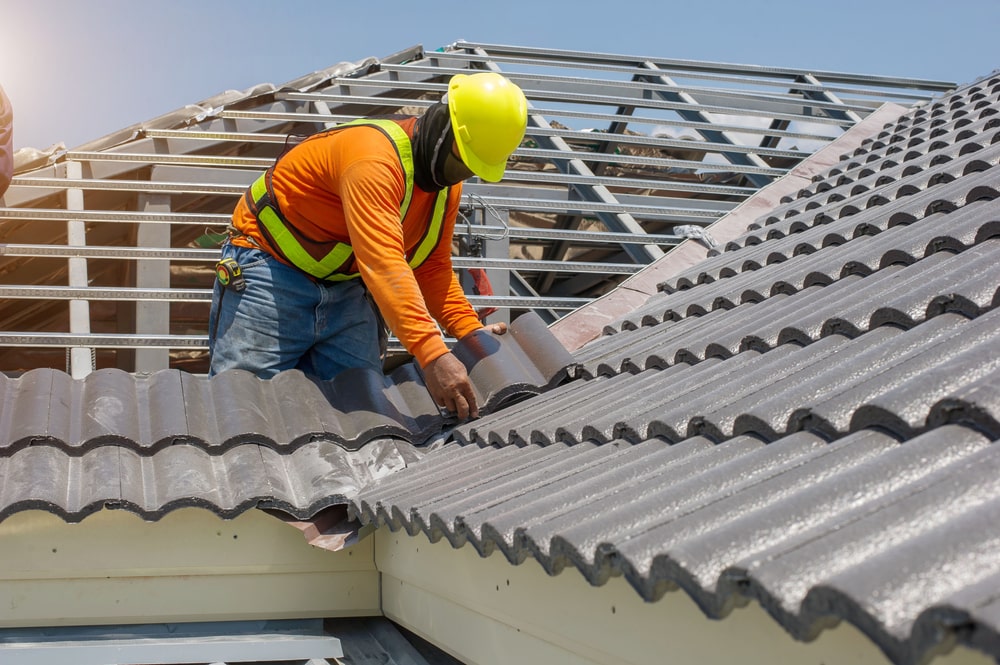Contrasting Prices Among Roofing Companies in Gainesville Florida
Contrasting Prices Among Roofing Companies in Gainesville Florida
Blog Article
Best Practices for Ensuring Proper Roofing Ventilation
A well balanced consumption and exhaust vent proportion, typically 1:300, plays a critical duty, with consumption vents ideally placed at the reduced edge of the roofing system for cool air entrance and exhaust vents at the top for warm air exit. Maintaining insulation away from vents is essential to avoid air flow constraint.
Understand Ventilation Fundamentals
Appropriately understanding ventilation basics is vital for making certain the long life and performance of roof. Effective ventilation mitigates dampness buildup and temperature level extremes in the attic, both of which can lead to substantial structural damage with time. A well-ventilated roof covering helps in avoiding common concerns such as mold development, wood rot, and ice dams, which can jeopardize the honesty of the roof covering materials and the underlying frameworks.
The primary objective of air flow is to help with the motion of air, allowing for a consistent exchange in between the indoor and outside environments. This equilibrium is accomplished through a mix of intake and exhaust vents that interact to keep optimum air flow. Intake vents, commonly located along the soffits or eaves, enable fresh air to enter the attic space, while exhaust vents, frequently located at or near the roof ridge, allow warm, moist air to run away.
Key variables affecting the efficiency of roof covering ventilation include correct positioning, sufficient sizing, and making sure that both consumption and exhaust vents are unhampered. Regular assessment and maintenance are vital to identify prospective clogs, damage, or inadequacies in the air flow system, thereby protecting the roofing system's performance and longevity.
Types of Roofing Vents
Roof covering vents play an important function in keeping effective attic room air flow and, by expansion, the overall wellness of the roof system. Different types of roofing system vents are offered, each with distinct benefits customized to specific roofing requirements.

Soffit vents are mounted under the eaves and operate in tandem with roofing system vents to make certain a balanced consumption and exhaust system. By enabling cooler air to enter from below, soffit vents promote the expulsion of hot air with upper vents. Gable vents, located on the outside wall surfaces of the attic room, deal an additional reliable remedy, especially in homes with gable roofing systems.
Assess Your Present Air Flow

Next, take into consideration the age and condition of your roof covering materials and ventilation components. Older systems may not conform with existing building regulations or might have degraded with time, decreasing their efficiency. Conduct an extensive evaluation to identify any kind of signs of damage, such as rust, damages, or gaps that can compromise the system's efficiency.
In addition, measure the attic room temperature level and humidity degrees. Heats and moisture can suggest inadequate ventilation - roofing companies. Use a hygrometer and thermostat to obtain precise readings, comparing them with outdoor conditions. Relentless discrepancies recommend prospective concerns that require dealing with.
Installment Best Practices
Efficient installation of roof air flow systems is vital for making sure optimum performance and longevity. Proper setup begins with recognizing the specific ventilation needs of the building and the roof covering it covers. This involves determining the proper ratio of consumption to tire vents, commonly sticking to the 1:300 guideline, which specifies one square foot of ventilation for every single 300 square feet of attic floor room.

Intake vents ought to be mounted at the roof's reduced side, usually in the soffits, to permit amazing air to enter. Exhaust vents, on the other hand, need to be installed near or at the roof covering's optimal to facilitate the leave of cozy, wet air.
Seal all air vent connections diligently to avoid air leaks and potential water seepage. Usage top notch products and comply with manufacturer standards to make certain longevity This Site and performance. Furthermore, incorporating ridge vents with baffles can significantly improve air movement effectiveness by protecting against wind-driven rainfall and snow from entering the attic.
Eventually, accurate installment of roofing ventilation systems mitigates potential issues such as mold and click to investigate mildew development, ice dams, and architectural damages, guaranteeing the roof covering's integrity and the building's total wellness.
Regular Maintenance Tips
Consistency in maintenance practices is essential to making certain the lasting effectiveness of roof air flow systems. Throughout these examinations, guarantee that vents are free of particles, nests, and other blockages that might restrain air flow.
Cleaning up the vents is an additional crucial job. Make use of a soft brush or a vacuum to remove dust and particles from intake and exhaust vents. Beware not to damage the vent screens or louvers throughout the procedure. Furthermore, examine the attic room area for any signs of water damages, which could endanger the stability of the roof system.
Proper insulation is similarly vital. Ensure that attic insulation does not block the vents, as this can significantly limit air flow. Rearrange or change it to preserve an efficient obstacle. if any kind of insulation has shifted or resolved.
Last but not least, replace any kind of damaged or missing out on parts quickly. Busted vents, fractured tiles, or deteriorated blinking can all add to inadequate air flow and must be attended to without hold-up. Normal maintenance makes sure that the roof ventilation system operates optimally, thus expanding the life-span of the roofing system itself.
Conclusion
Ensuring appropriate roof covering air flow is paramount for maintaining the performance and resilience of a roof system. Adherence to the 1:300 intake and exhaust air vent proportion, paired with the calculated placement of vents, is essential. Regular biannual assessments, debris cleaning, and making sure insulation does not obstruct air flow are essential practices. Applying these best methods will certainly promote you could try here a well-ventilated roof, thus minimizing possible issues associated with moisture build-up and too much warm, inevitably prolonging the roof covering's life expectancy.
A well balanced consumption and exhaust vent proportion, typically 1:300, plays a crucial role, with consumption vents preferably placed at the lower side of the roofing for trendy air access and exhaust vents at the top for warm air departure. Consumption vents, typically situated along the soffits or eaves, enable fresh air to get in the attic room space, while exhaust vents, typically positioned at or near the roofing system ridge, enable hot, humid air to run away.
Soffit vents are set up under the eaves and job in tandem with roof covering vents to make sure a balanced intake and exhaust system. By permitting cooler air to go into from below, soffit vents help with the expulsion of hot air with top vents. Adherence to the 1:300 intake and exhaust air vent proportion, paired with the tactical placement of vents, is important.
Report this page